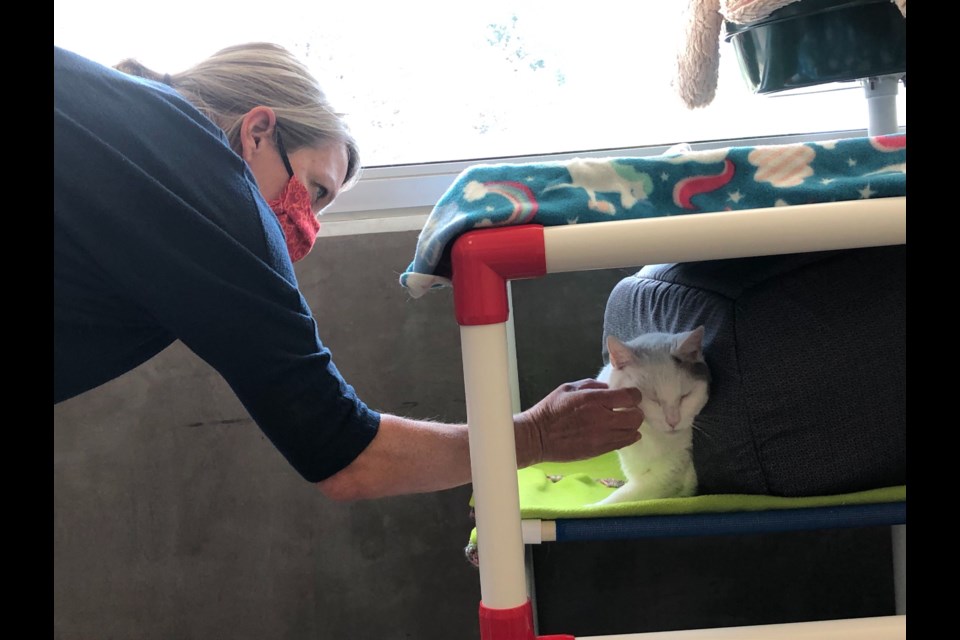At the Longmont Humane Society, adoption rates are slowly increasing as coronavirus-related health regulations begin to loosen. Adoptions were suspended for a short period in mid-March and the Humane Society is now offering appointments for furry friend seekers.
During its mid-March adoption hiatus, the Humane Society focused on finding foster homes for animals in its care and did not receive any new animals except for strays. Finding homes for animals was important to ensure quality care with minimal staff on hand.
“We were able to reduce the number of animals being cared for in our facility significantly enough that our staff were able to continue to provide a high quality of care to the animals that remained with us even through the loss of access (to) the assistance of our volunteer corps, whom we had to ask to stay home at that point,” said Director of Marketing and Communications Carrie Brackenridge.
CEO Liz Smokowski said the Humane Society relies heavily on volunteers to ensure all animals are cared for and their absence has been notable.
“We missed them greatly,” Smokowski said. “They play such a key role in our day-to-day operations, (including) our ability to provide multiple walks a day for the dogs (and) socialization for the cats. … It had a huge impact.”
Soon after implementing the adoption hiatus, the Humane Society was able to facilitate adoptions through foster homes. Throughout it all, Brackenridge said there has been “absolutely no interruption in the level of care” for animals.
Quality care was crucial for a facility that saw fewer animals walk out its doors during the pandemic. Things were at their worst in April, when the Humane Society had an 81% decrease in adoptions compared to its monthly average in 2019.
“As of the end of May, LHS is completing an average of 147 adoptions per month in 2020,” Brackenridge said. “Our monthly adoption average at the end of 2019 was 219. Our slowest month for adoptions during COVID-19 so far has been the month of April, when we completed 42 adoptions, as compared to 175 in the same month the year before. As we have had time to refine our adoption processes by appointment, we are happy to see our adoption numbers recovering through May, when we adopted 162 animals into new forever homes.”
Smokowski said she believes adoption rates will continue to increase as the Humane Society begins to receive more animals.
“We are working now again that the regulations are letting up and things have progressed in a positive direction,” Smokowski said. “We are able to transfer animals in from other areas and that gives us the ability to have more of a selection for people who are interested in adopting. As that continues, the availability of animals will increase, and therefore we're anticipating that adoptions will also increase.”
Lower adoption rates wasn’t the only major impact of COVID-19 on the Humane Society. In addition to suspending its volunteer program and moving to an appointment-only adoption model, it was forced to cancel its largest annual fundraiser, but did hold an alternative online auction in early June. It also moved its public dog training classes and Summer Kids & Critters Camp programs to a virtual setting.
As quarantine winds down and pet owners begin to leave their houses more often, separation anxiety can become a major problem for pets. Brackenridge recommends establishing a routine and easing pets back into spending time alone.
“You can help establish a new routine by practicing leaving your dog alone multiple times per week,” Brackenridge said. “Try going for a walk without your dog, calling a friend while enjoying some sun or reading a book in a separate room. The most important thing is to leave your dog alone for only as long as they are comfortable. This might be 10 minutes, it could be an hour. Do what works for you and your dog. With practice and repetition, you can help ease your dog back into being comfortable when left alone while you are at work.”
To learn more about adoption or to donate to the Humane Society, visit its website.


